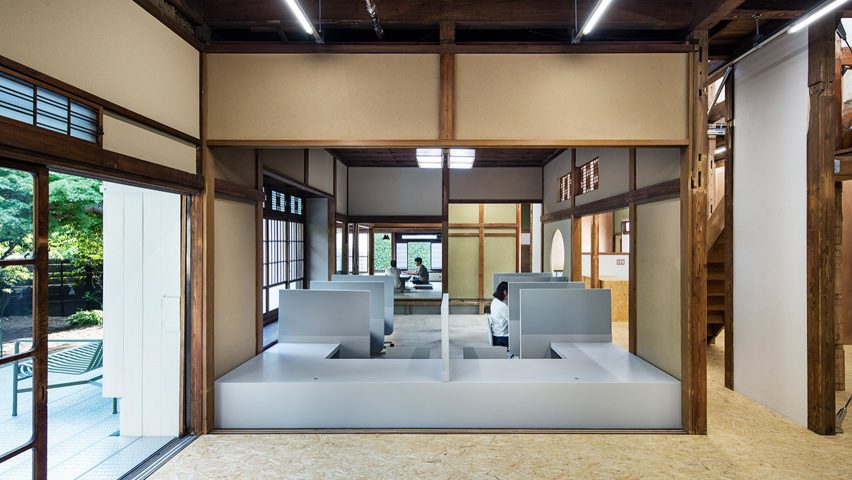
Schemata Architects contrasts original features with modern interventions for Japanese office
Schemata Architects, headed by Jo Nagasaka, has converted a traditional house in Kamakura, Japan, into an office featuring modern fitted furniture.
The building is located in a quiet, residential neighbourhood in a city just south of Tokyo, surrounded by lush gardens.
Nagasaka and his colleagues at Schemata Architects set about transforming the 80-year-old house into a residence and office that retains the building's character whilst adapting to its new use.
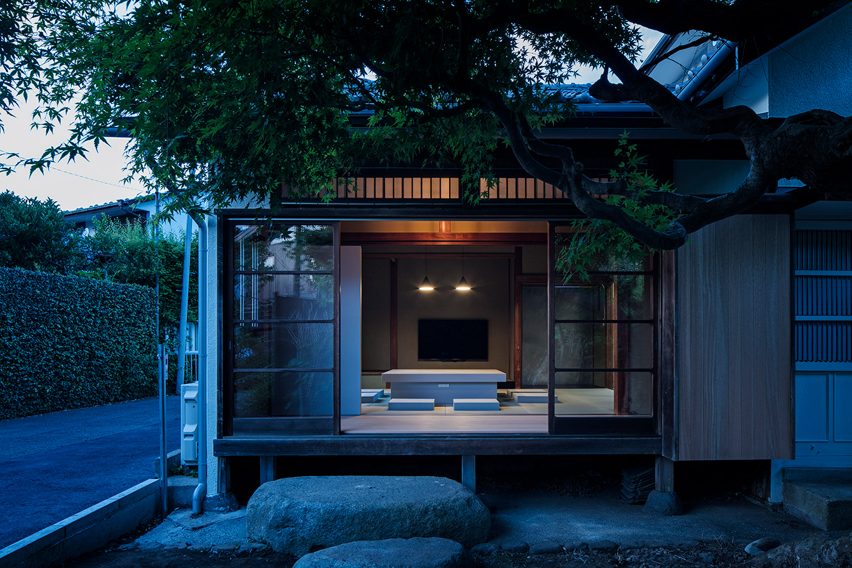
The studio created a blank canvas for the refurbishment by stripping the interior back to reveal the original timber framework and ceiling.
These were carefully restored along with some of the roughly plastered wall surfaces.
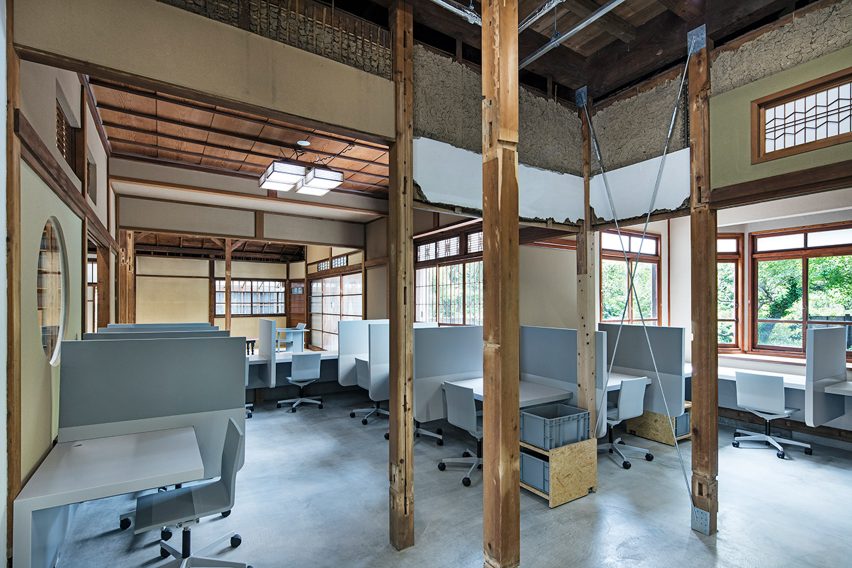
"I expected that we would be able to enhance the beauty by keeping the existing finishes as they are, while partially exposing the substructure by removing some parts," explained Nagasaka.
"When we observed these things, we decided to focus on floor heights and finishes and treat them as a means to express different spatial characters and define functional zones."
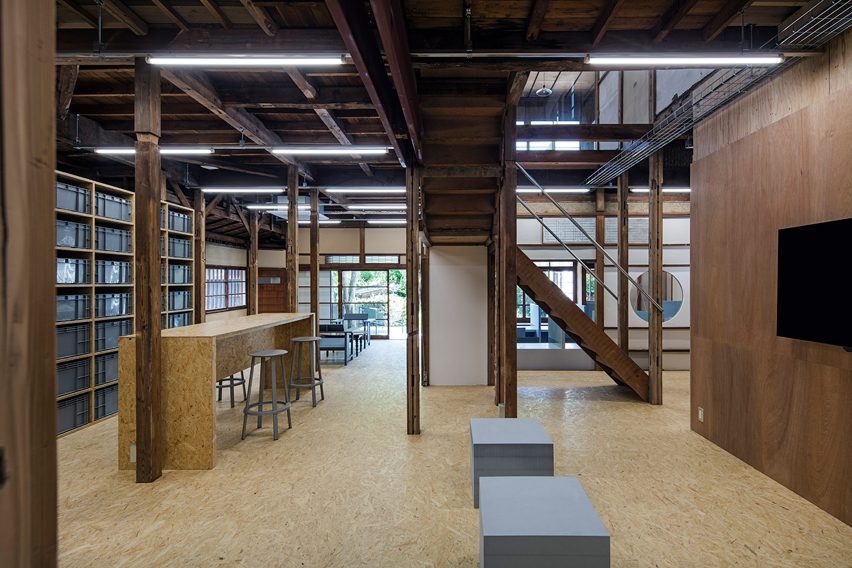
The interior was previously separated by typical Japanese wood-framed paper sliding doors, and featured rooms that all opened onto the outdoors. The partitions were removed to create a sequence of open and connected spaces.
A new tatami room created near the entrance is elevated 40 centimetres above the floor. This room is lined with a traditional verandah known as an engawa that looks out onto the garden.
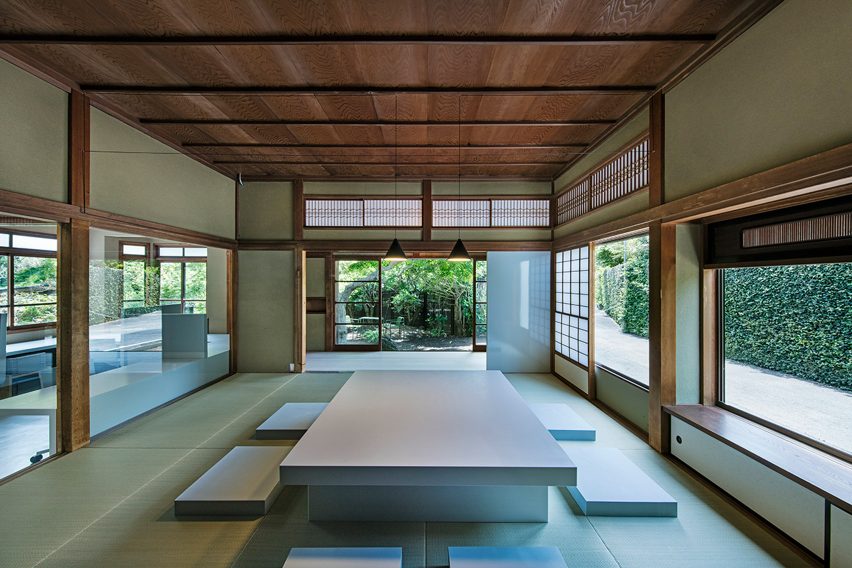
The raised floor of the tatami room was used as a reference plane to determine the height, dimensions and finishes of the floors throughout the rest of the building.
"Each room was distinguished from others by different characteristic furniture placed there," the studio added.
"The floor height differences create a vibrant feeling as well as different viewpoints, allowing one to constantly feel nature and creative energy at any place and any time in this space."
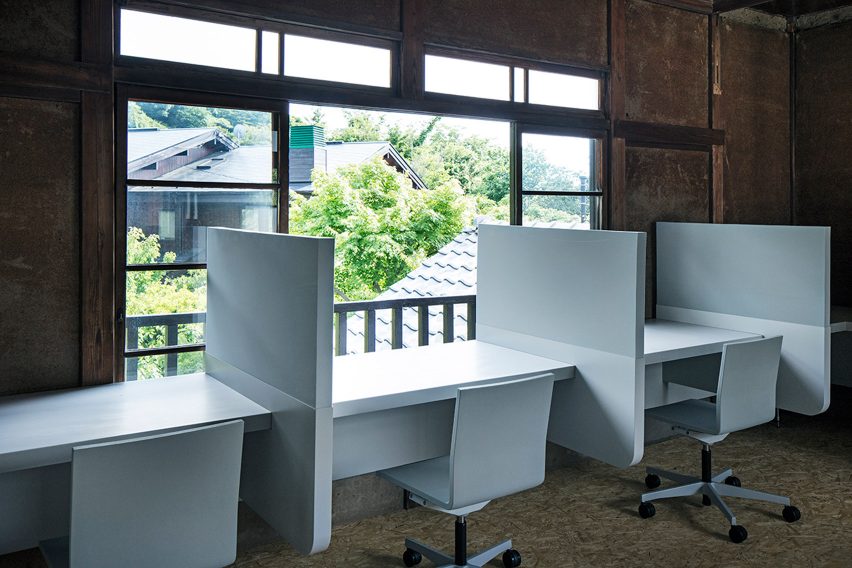
The main office space is positioned alongside the tatami room at the centre of the building. Its continuous desk surface connects the entrance area with the rest of the interior while creating a subtle division between the different zones.
An open-plan lounge, kitchen and dining area situated along the northeast edge of the building opens onto a terrace that connects with the garden.
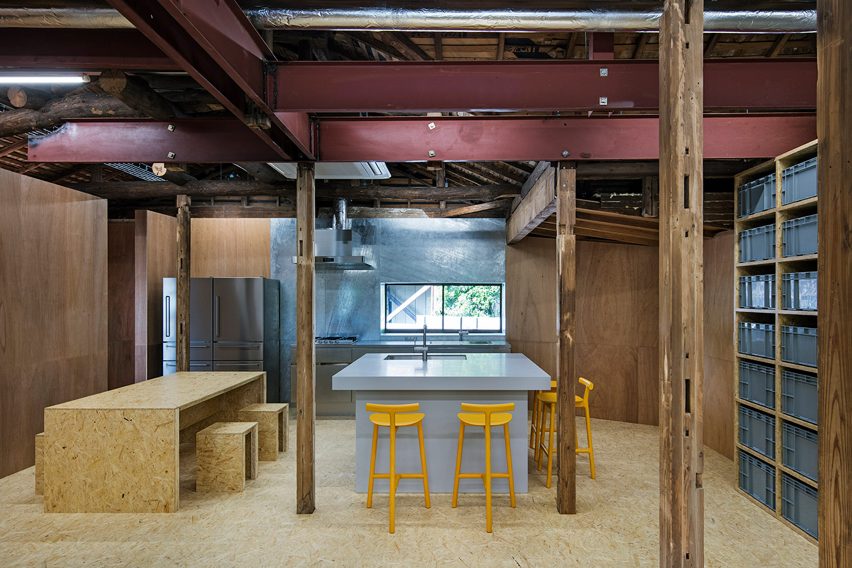
The kitchen features a built-in island painted in a light grey that matches the rest of the fitted furniture. This grey tone provides a consistent element within the interior, along with the use of oriented strand board for flooring and furniture.
Throughout the building, modern interventions including the furniture, exposed structural I-beams and ventilation ducting contrast with the rough and patinated surfaces of the existing features.
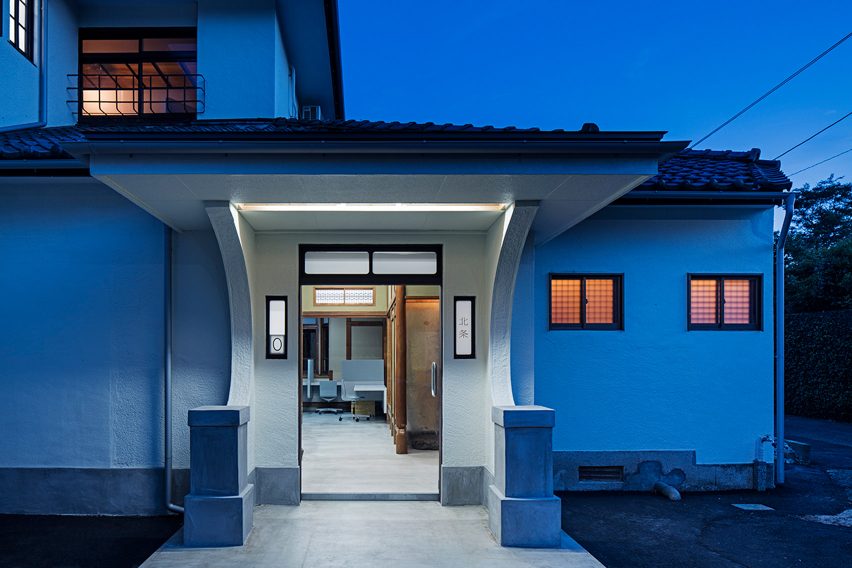
Schemata Architects previously worked on an office for a Tokyo record label featuring industrial finishes and mobile furniture. The studio has also renovated a capsule hotel and used plywood panels to conceal storage and serving hatches at a coffee shop in the Japanese capital.
Photography is by Kenta Hasegawa.